New Survey Shines Light on How Business Leaders View Sustainability


The past 10 years have seen incredible progress in sustainable business. There are global multi-stakeholder commitments on climate action and the U.N. Sustainable Development Goals, collaborations driving systemic change across value chains, and tremendous improvements in corporate and investor practices toward a more sustainable world.
The BSR and GlobeScan State of Sustainable Business 2018 Survey is a great testament to the progress of corporate action and provides insight into how companies are preparing for the next 10 years as they respond to a rapidly changing world.
The survey includes responses from business leaders representing 152 global companies—more than 60 percent of BSR’s global membership network. These are people who do sustainability and corporate social responsibility work every day inside some of the largest and most influential companies in the world.
In recognition of our 10th year and the fact that BSR sees a changing global agenda, we updated the list of corporate sustainability priorities that we track. Interestingly, ethics/integrity and diversity/inclusion were on the list for the first time and jumped straight to the top two priorities for sustainability efforts during the next 12 months.
While these are of course longstanding corporate issues, they are now increasingly viewed as part of the sustainability agenda, perhaps a reflection of global attention on these topics.
Responding to global trends
Business leaders identified climate change and human rights as top priorities in the survey throughout the past decade, and they round out the top four. There appears to be less interest in issues more closely related to public policy, with a third of respondents stating that public policy frameworks are a low priority and only 11 percent stating they want to influence policy frameworks to address new global opportunities and challenges.
Given the systemic nature of these issues, this may constrain meaningful impact: Companies should rethink how to appropriately use their influence as part of their evolving approaches to managing sustainability.
We also increasingly see that business is anticipating and responding to global mega trends to create more resilient strategies for long-term success. Disruptive technologies like artificial intelligence, concern over data privacy and ownership, and the impacts of our changing climate are clearly the mega trends now shaping future business strategies.
Implications of technology
That said, while 86 percent of technology and media companies recognize AI/automation as a mega trend most impacting strategy, just more than half of other sectors rated this as a top-three trend. And in spite of its presence in the headlines today, data privacy, while a top trend influencing companies overall, was prioritized by less than a third of consumer-facing companies.
The implications of new technologies impact all aspects of society, and companies in non-tech sectors need to understand and prepare for this reality. BSR's recent series of working papers on this topic explore how companies across industries can begin to do so.
Further, less than 20 percent of company respondents rated geopolitics, rising inequality, polarization or mass migration as one of their top three mega trends. It could be that these are seen as secondary trends or the purview of government.
But given the impact that automation, artificial intelligence and climate change are likely to have on employment and social upheaval and the dysfunction in many government institutions, these trends are likely even more significant as they’ll shape the future context in which business operates.
Perhaps the most exciting finding is that 75 percent of corporate sustainability professionals say sustainability needs to be better integrated into business strategy to create resilient strategies necessary to address these global shifts.
As one executive told us in interviews for our recent report on Redefining Sustainable Business, “Most big businesses have been working on sustainability with reasonable success for the last 10 to 15 years, but we have been picking the low-hanging fruit, and the next phase will be much more difficult. It is about what you buy and what you sell. It goes into the heart of your commercial operations and investment decisions.”
Core business activities
Despite the rhetoric about CEO activism and transparency, just 11 percent and 15 percent of respondents, respectively, viewed these as important actions to address global trends. They focused instead on core business activities like strategy, value creation and value chain collaboration.
This focus on core strategy is comparatively lagging in North America, however, with 64 percent of those businesses selecting this option as an important opportunity for impact, compared to 86 percent in Europe and 89 percent elsewhere.
While recognition of the need to engage with the strategic planning function is growing—it increased from 23 percent to 33 percent in just one year—sustainability teams still struggle to get traction with such engagement.
Less than a third of respondents believe they are now engaging in strategic planning. We look forward to seeing this number jump in next year’s survey as companies make progress in creating and implementing resilient business strategies.
Previously posted on the BSR blog and 3BL Media news.
Image credits: 1) Alesia Kazantceva via Unsplash 2) Courtesy of BSR
Millennials and Generation Z are Poised to Shake Up the Investment World, Study Finds
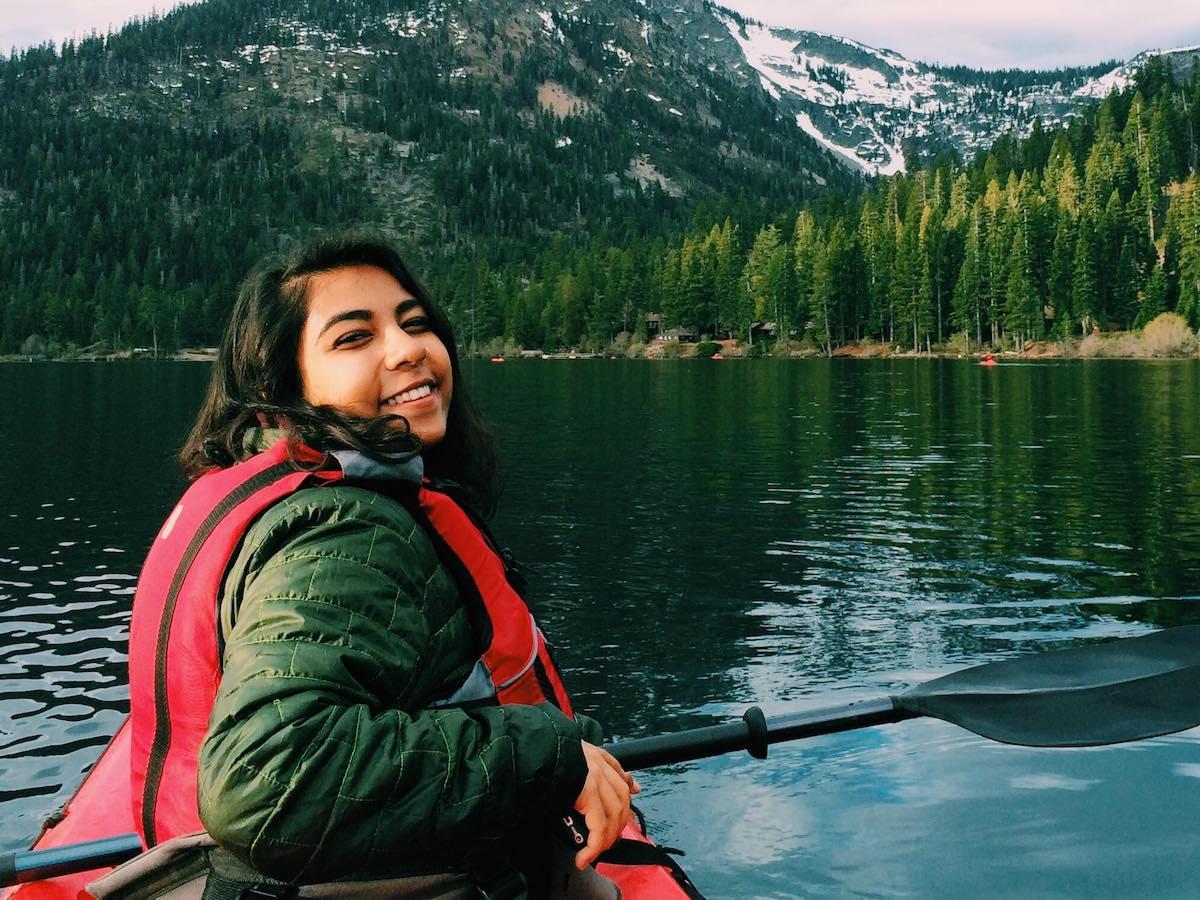

The vast majority of Generation Z and millennial investors are engaged in socially responsible or impact investments, or plan to invest this way in the future, according to a recent study from Swell Investing. That comes as no surprise to me. As the parent of millennial and Gen Z daughters, I’ve seen firsthand how they are shaking up the status quo—and the investment world is no exception.
Sometimes called “post-millennials” or “iGen,” Generation Z—aged 18 to 24—make up more than a fifth of the U.S. population and are the most racially and ethnically diverse group in the nation’s history. They’re true digital natives who report being online “almost constantly,” according to a 2018 study by Pew Research Center.
Swell Investing found that 84 percent of Gen Z investors are either already invested in socially responsible or impact investments or plan to invest this way in the future. Nearly one in three Gen Z investors (31 percent) said they would be willing to allocate 50 percent or more of their investment portfolio to socially responsible or impact investments. One in four millennial investors would do the same. This is compared to only 18 percent of Gen X investors and 11 percent of Boomer investors, according to the study.
The study was conducted online by Harris Poll on behalf of Swell Investing—a socially responsible investment adviser incubated by Pacific Life—and gathered insights from more than 2,000 U.S. adults aged 18 and up, more than 1,400 of whom have investments.
Social impact matters most
My oldest daughter, Marielle Velander, 26, is a research manager with Reboot, a company in New York City that works to solve civic problems and help government, civil society and philanthropy to achieve their social missions. When she has money to invest, she told me, socially responsible investing is the only type of investment she would consider.
“At this point, any initiative that doesn't also have a wider social impact is not worth our time or money,” she said. “We need a bigger collective effort to address our shared problems around governance, both when it comes to minority representation and environmental degradation.”
Concern for environment top priority
That conviction is borne out by Swell's study—which found that politics, environmental concerns, and a sense of responsibility appear to drive the majority of Gen Zers and millennials toward socially responsible investing. Nearly three in four Gen Zers (72 percent) think that decisions made around investing can have a meaningful impact on climate change and the release of greenhouse gases.
“These factors would definitely drive my interest in terms of where I invest my money,” said Aneesa Khan, 23, delegation leader to the U.N. climate talks for the youth-led advocacy group SustainUS, who lives and works in Washington, D.C. “Climate change is not a problem of the future—it affects vulnerable families like mine on the coast of India with harrowing droughts and floods today.
"Scientists say we have 12 years until we reach the point of no return with climate change. I will make responsible investment decisions to protect frontline communities like women, people of color, indigenous people, and low-income families from having to bear a majority of the burden of a problem that they didn’t cause.”
Technology drives sense of responsibility
“The next generation of investors grew up with a smartphone in hand and instant access to news and information," said Dave Fanger, CEO and founder of Swell Investing. "Events that happen thousands of miles away can be seen immediately in the palm of their hands, and they’ve never known anything different. This access developed in them a sense of responsibility and empathy that carries over to their financial lives."
Khan had a similar insight. “I think that social media and the internet have made it easier for me to access what I need to make informed, smart decisions on where I put my money,” she told TriplePundit. “It helped me figure out that I want to put my money in a bank or retirement fund that doesn’t support the Dakota Access or Keystone XL pipelines, and I am sure that I will continue to make my decisions based on reasons like this.”
Committed to change
But as my daughter Marielle points out: “I would have had that sense of empathy regardless."
"Most of my passion for social impact has come from firsthand experiences of what political challenges and disregard for the environment are doing to our general well-being across the world, whether it is interviewing a young Brazilian woman of African descent seeking access to education and public services in her local community, or learning to adapt to water shortages while living with a family in Jordan. I would say travel and education opportunities have been the biggest factors in how I would invest my money.”
Motivation may vary, but the trend driving millennials and Gen Zers toward more socially responsible investing seems here to stay. “In the long run, we need to see a complete and just transition of our energy system away from fossil fuels," Khan said, "and I believe that one way is to take individual action by investing in a socially responsible manner."
Image credit: Pixabay
Blockchain and the Ocean Plastic Pollution Fight: Perfect Together
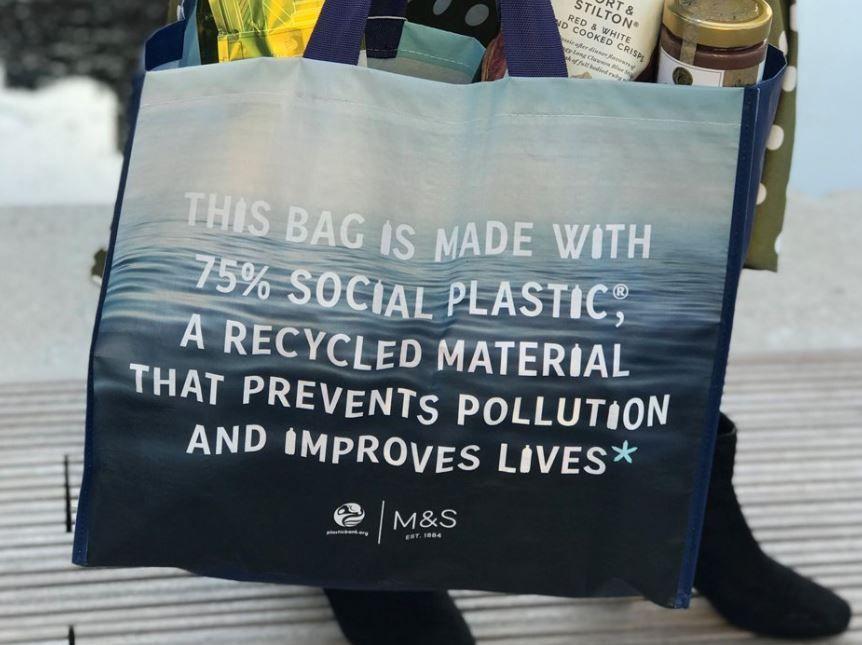

Blockchain technology is steadily gaining traction as a platform for action on global sustainability issues, and the latest case study could mark a turning point for the ocean pollution problem. The U.S. company SC Johnson partnered with Canadian startup Plastic Bank in a new blockchain-enabled pilot project aimed at collecting and recycling plastic waste in eight Indonesian communities. We take a closer look.
What is blockchain?
Blockchain is the technology that supports cryptocurrencies like Bitcoin. Unfortunately, the high-flying, speculative nature of Bitcoin and other popular cryptocurrencies has overshadowed the workaday nature of blockchain itself.
Blockchain is simply a form of digital record-keeping. Think of it like an online ledger book that is visible to both the buyer and the seller.
That's a fundamental contrast to conventional accounting, in which the buyer and seller keep their own separate books.
With access to the same information, buyers and sellers can seamlessly use digital tokens—aka cryptocurrencies—to stand in for cash transactions. In effect, blockchain brings the barter economy into the 21st century.
By pegging the value of tokens to local currency, blockchain transactions can also interact with the local cash economy.
The blockchain angle is critical to the success of the Indonesian partnership between SC Johnson and Plastic Bank, because it alleviates safety concerns in communities where residents are reluctant to carry cash. It also provides a secure alternative for participants without bank accounts.
From a bottom-line perspective, blockchain also reduces overhead, error and theft risks related to conventional cash handling.
Why Indonesia?
The Plastic Bank model builds on the waste economy long practiced by local collectors in Indonesia and elsewhere. The partnership with SC Johnson involves opening eight recycling centers in Indonesia by next May. The first one is already up and running in Bali.
As SC Johnson notes, Indonesia has become the focus of global attention for its plastic pollution as well as its rich marine biodiversity. In other words, Indonesia offers a high-profile opportunity for action with a significant potential for success.
The new initiative also represents a stepping-up of SC Johnson's sustainability profile in Indonesia, where it has longstanding operations. Recent actions include using waste palm shells and rice husks as biofuel at its Medan and Surabaya facilities.
Another significant factor is the country's willingness to provide financial support. Indonesia recently pledged up to $1 billion annually for overall water pollution measures, including a target of reducing marine waste 70 percent by 2025.
For those of you keeping score at home, Plastic Bank uses IBM Blockchain through the cloud service provider Cognition Foundry, powered by IBM LinuxONE.
There's plastic, and then there's Social Plastic
In addition to tracking transactions between collectors and recycling facilities, Plastic Bank enables manufacturers to purchase and track the recycled product through their supply chains under the Social Plastic name.
Social Plastic provides a sustainability marketing angle for consumers, and it also provides a carbon offset opportunity for corporations. Royal Dutch Shell, for example, was an early adopter when Plastic Bank launched its first recycling centers in Haiti. Getting SC Johnson on board represents another big step up for Plastic Bank. Founder and CEO David Katz explains:
This partnership with SC Johnson is the first of its kind in Indonesia. It will help create more opportunities for people living in poverty and will offer waste collectors an important sense of pride. SC Johnson is the first [consumer packaged goods] company to scale a program of this kind in Indonesia that will benefit a wide range of socio-economic demographics including local residents living below the poverty level.
Other recent partnerships include Germany-based Henkel and the British retailer Marks and Spencer.
Plastic Bank has also established a nonprofit, the Social Plastic Foundation, to help accelerate the adoption of its recycling centers globally.
As Plastic Bank grows, look for more manufacturers to bring Social Plastic into their supply chains.
Image credits: 1) and 2) courtesy of SC Johnson 3) Courtesy of Marks and Spencer
Consumer Preferences Continue to Shift Toward Sustainability, Market Research Shows
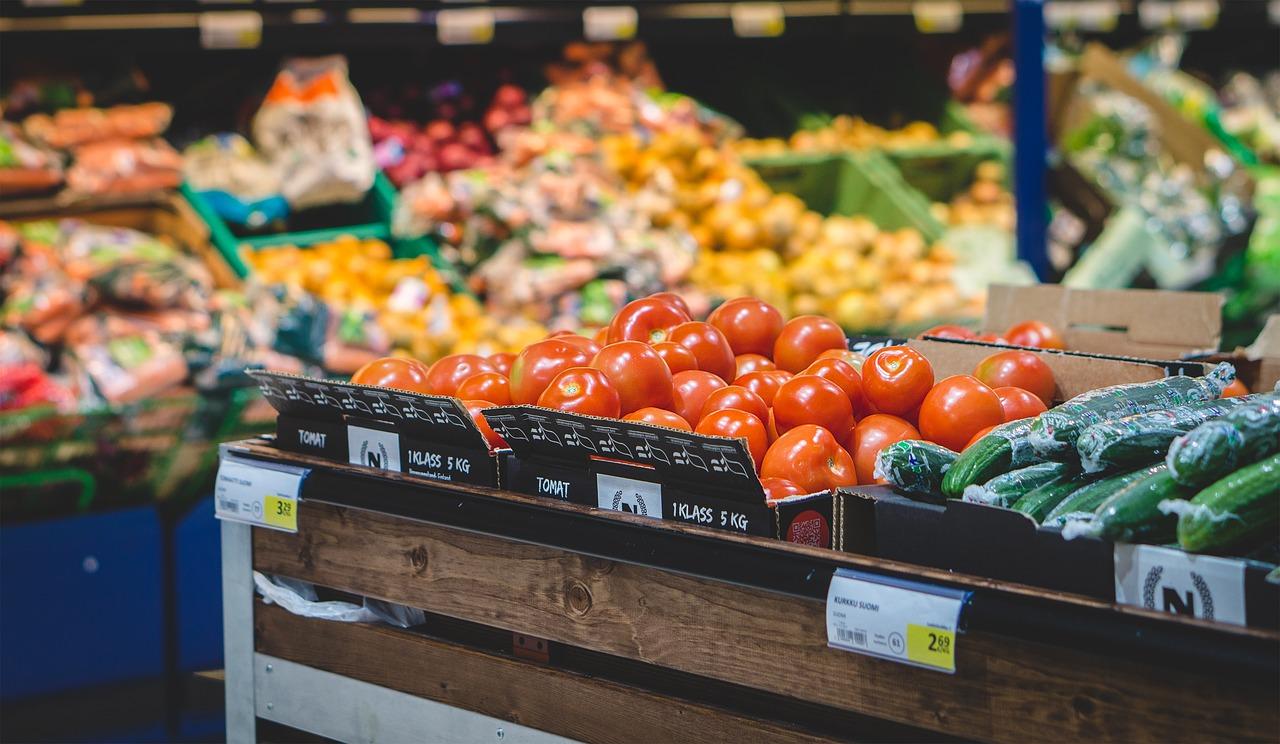

Sustainability is no longer a niche function of big companies with a reputation to protect.
This isn’t news to anyone monitoring this year’s headlines thus far. What’s remarkable, though, is the role that everyday consumers have in pushing sustainability into the mainstream.
Brands large and small—from startups to centuries-old stalwarts, from brick-and-mortar to online natives—have collectively come to recognize the market potential that sustainability represents, not just as a business imperative but also as a market requirement originating with savvy consumers. And no matter if you’re a consumer-facing manufacturer, retailer, media company or supplier, transparency rules the day.
Consumers care about sustainability
According to a recent survey conducted by Nielsen, 81 percent of global consumers say it's extremely or very important for companies to implement programs to improve the environment. Consumers in many emerging markets feel even more strongly about this, with India (97 percent) and Colombia (96 percent) at the top.
And it’s not just about what consumers say is important for companies to do—73 percent of respondents said they would either definitely or probably change their consumption habits to reduce their impact on the environment, while 38 percent said they would pay higher-than-average prices for products made with sustainable materials.
Sustainability is clearly important to consumers. But what one says and what one does at the point of purchase or e-commerce checkout are often different.
Consumers vote with their wallets when it comes to their sustainability preferences, just like any other attribute. But they aren’t consistent in their behavior—what they care about varies widely by category and claim. That’s where Nielsen's recent research into consumer purchase behavior comes in. In another recent report, we found that products with sustainability claims in three categories grew twice as fast as the total category dollar growth for each. Chocolate (+16 percent vs. +5 percent), coffee (+1 percent vs. -1 percent) and bath products (+14 percent vs. +1 percent) with certain sustainability claims grew faster in sales compared to their total categories.
Whether you’re a brand manager, marketer or sustainability professional, it’s up to you to invest in the relevant sustainability aspects for your business to make sure you deliver on consumer expectations.
Sustainability at the shelf
The popularity of natural products is surging as consumers grow more conscious about what they put into their bodies and the effect these products have on our broader world. Increasingly, this focus on prioritizing what’s both “healthy for me” and “healthy for we”—the planet, other people, one’s local community—is contributing to consumer interest in product and ingredient transparency.
Take Taiwan as an example. A recent analysis of Nielsen retail sales data in Taiwan indicated that natural products were seeing growth in otherwise declining categories. For instance, while the overall shampoo category saw declines of 3.4 percent, there was a 2.2 percent growth in the natural shampoo category. In a category with an 11.2 percent value share, catering to consumer demand for a more sustainable shampoo not only benefits the environment, but also the bottom line of companies smart enough to give these shoppers what they want. Similar sentiments can be seen in the sales figures for shower gel, where the overall category saw a decline of 0.8 percent, but natural shower gel experienced a whopping 80 percent growth, in a category with 10.3 percent value share.
Not all sustainability trends are so easy to spot. For example, the consumers who seek out hormone-free eggs at the supermarket might not also prioritize clean ingredients in their pasta sauce. Tailored insights are the key to uncovering what sustainability trends mean for a specific business, consumer segment or product category.
For example, why did 68 percent of U.S. survey respondents say it is extremely or very important that companies implement programs to improve the environment, a figure that’s 13 percent lower than the global response? There is compelling evidence to suggest that, as consumers grow more sophisticated about sustainability, their concerns become increasingly niche—which creates a more competitive landscape.
In developed markets, “natural” simply doesn’t cut it. Companies that speak to specificities and avoid generalities stand to benefit greatly. For instance, recent Nielsen Product Insider figures for animal welfare claims showed that “farm raised” and “farmed seafood” categories saw declines of 19 percent and 4 percent, respectively, while their more specific counterparts—“grass fed” (+24 percent), “free range” (+22 percent) and “dolphin safe” (+4 percent)—saw major growth.
What does sustainability mean today?
Our collective definition of sustainability has continued to expand and evolve over time. No longer relegated to environmental considerations, sustainability can be inclusive of everything from recyclable packaging, to water and air pollution, to responsible business and supply chain practices—and plenty more.
Depending on your industry, geography and consumer base, there are specific sustainability indicators that are of greatest relevance to your particular business. Make sure your teams have a clear understanding of what these are and how all functions work together to ensure that sustainability is infused throughout your journey, from brainstorming a new product all the way through to its placement on the shelf.
This is an opportunity to build trust and engage with your customers and other stakeholder groups to enable a positive long-term relationship and mutually-beneficial dialogue between consumers and your brand. To that end, your sustainability strategy should be real, multi-dimensional, and ultimately create value for the world through your business practices, operations, supply chain and products.
For most brands, sustainability is no longer an optional exercise, but rather a call-to-action that consumers expect all companies to hear—and quickly. Consider the recent movement to go strawless. What started as an announcement from one company quickly grew into a cavalcade of companies adding their voices to the chorus. Today, a still-growing group of companies like Starbucks, Marriott, American Airlines and Disney have committed to ban plastic straws. A single pledge quickly grew into a sustainability movement, with consumers’ changing preferences at the heart of the story.
Call to action
Time is of the essence, and increased action and activation on the part of consumers and companies is needed—now. As Scientific American recently reported, there are only 60 more years of farming left if soil degradation continues around the world. The negative effects of climate change and business practices that deplete our resources, rather than regenerate them, are real. In our increasingly resource-constrained world, it’s critical that all companies do their part across the triple bottom line of people, planet and profits.
Ensuring the sustainability of your company’s products to meet consumer demand is one critical piece to enabling—and growing—our sustainable future.
What Is the New Plastics Economy, and Why Does It Matter to Business?
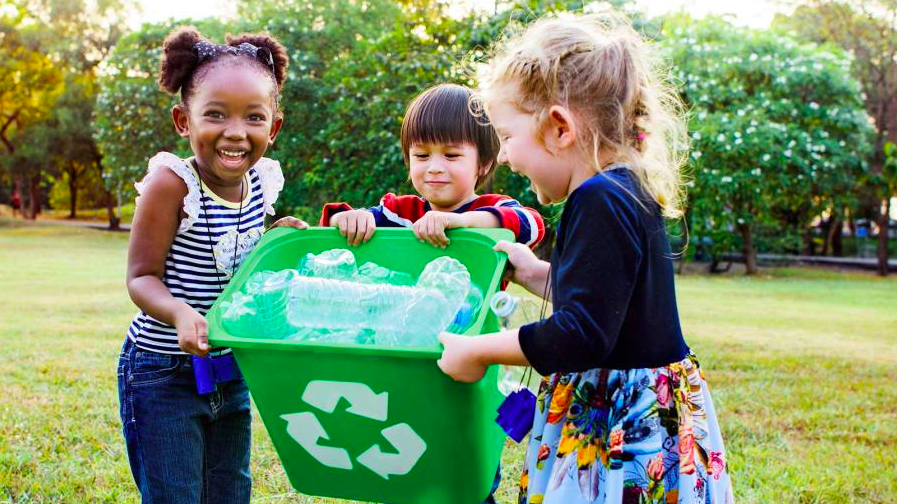

Last month, more than 290 organizations and business leaders came together in support of something called the New Plastics Economy Global Commitment. That's a lot of firepower to assemble in support of one goal. By way of comparison, there are only 28 member states in the European Union, 50 states in the United States, and 193 countries in the United Nations.
The raw numbers indicate one essential element of interest in terms of corporate social responsibility: whatever the New Plastics Economy is, it's good for business.
With that in mind, let's take a closer look at the New Plastics Economy and one of its charter members, Johnson & Johnson.
What is the New Plastics Economy?
The New Plastics Economy comes under the umbrella of the Ellen MacArthur Foundation—a charitable foundation dedicated to the circular economy, in which waste materials are reused in perpetuity—with the Eric and Wendy Schmidt Fund for Strategic Innovation as a leading philanthropic partner. It is a waste-reducing initiative that begins with a keen awareness of the challenges involved in kicking the global plastic habit:
Plastics are fundamental to our everyday life. Yet, they are one of the most wasteful examples of our existing linear, take-make-dispose economy. With 8 million tons of plastic entering the ocean each year, we urgently need to rethink the way we make, use and reuse plastics.
To re-emphasize, the immediate goal is to reduce plastic waste, not to eliminate the use of petro-plastics. That may seem an overly modest goal, but it does focus attention on the urgency of reducing waste. Innovating the world's way out of petroleum dependency is a long-term goal.
Only 14 percent of plastic products are currently recycled, according to a 2017 report from the New Plastics Economy. Experts with the initiative foresee a recycling ceiling of around 70 percent and say tackling the remaining 30 percent would require a "fundamental design and innovation" approach. The New Plastics Economy pivots on the now-familiar concept of the circular economy:
Catalyzing change through collaboration in this global material flow will not only create a more effective plastics system, but will also demonstrate the potential for a wider shift from a linear to a circular economy—an economy in which plastics never become waste.
Cooperation among plastic-dependent companies is the key to the New Plastics Economy. The Global Commitment creates a platform for sharing best practices. It also sets up a common goal, with the expectation that a coordinated marketplace will help foster the innovation needed to meet that goal.
With a market-based target in hand, the New Plastics Economy anticipates that innovations will be focused on a global scale, to "re-define what’s possible and create the conditions for a new economy."
Part and parcel of the program is an evidence-based approach and an effort to engage stakeholders at every level, from students and academia to governments, NGOs and trade associations.
The Johnson & Johnson factor
Johnson & Johnson is a standout example within the New Plastics Economy, partly for its sustainability track record and also for its focus on social issues.In a recent press release, the company notes that its history in awareness predates the corporate social responsibility movement:
In 1947, decades before the concept of sustainability became popular, then Johnson & Johnson Chairman and CEO General Robert Wood Johnson wrote in his book, Or Forfeit Freedom: “We must use our resources wisely, avoiding waste of both raw materials and scrap, while we seek substitutes for things already in short supply.”
Since then, the company has built up a roster of engagement with sustainability issues. Its in-house Health for Humanity 2020 Goals include a carbon footprint target, and it has also made commitments to the United Nations Sustainable Development Goals.
Johnson & Johnson already has a running start on product innovation that reduces waste, through its Earthwards program:
Since its launch in 2009, the Earthwards program—which encompasses consumer items, medical devices and pharmaceuticals—has seen the number of recognized products steadily rise. In the program’s first year, there were only three Earthwards-recognized products; by 2016, that number had jumped to 93.
The company's consumer branch has taken up responsibility for propelling the New Plastics Economy as a charter member. The approach is a holistic one:
Johnson & Johnson Consumer Inc. is pledging to use more recycled materials in packaging; reduce reliance on the single-use model; and ensure that 100 percent of plastic packaging be reusable, recyclable or compostable by 2025.
The focus on consumer brands, such as Johnson’s, Neutrogena and Listerine, provides leverage for an important missing piece of the New Plastics Economy: the human factor. With the prospect of plastic waste in the oceans doubling by 2025, there is clearly a need to engage individual consumers in the New Plastics Economy. Among Johnson & Johnson's actions on waste reduction, the company includes How2Recycle labels on its packaging. It also promotes recycling for personal care products through its Care To Recycle program.
Evidence is mounting that consumers will respond to messages about sustainability and social action. The CSR movement has certainly gone mainstream when publications like Entrepreneur feature headlines like this one...
5 Reasons Why Sustainability and Social Issues Attract CustomersConsumers want to feel good about the companies they buy from. What's your company doing to help that happen?
...capped off with this observation:
People who support specific causes are more likely to spend their money at businesses that share their interests. Use social media and other opportunities to educate and entertain people about your cause as well as your products and services to build brand awareness and increase revenues.
Recycling, reclaiming and repackaging have become powerful marketing tools. Aided by vivid pictures of beaches and sea life choked by plastic waste, public awareness of the ocean plastic problem is all but certain to continue building.
As the New Plastics Economy gains steam, look for companies like Johnson & Johnson to ramp up their efforts to educate and engage consumers—and build more shelf space, too.
Photo (screenshot): via Johnson & Johnson.
5 U.S. Climate Stories to Watch in 2019
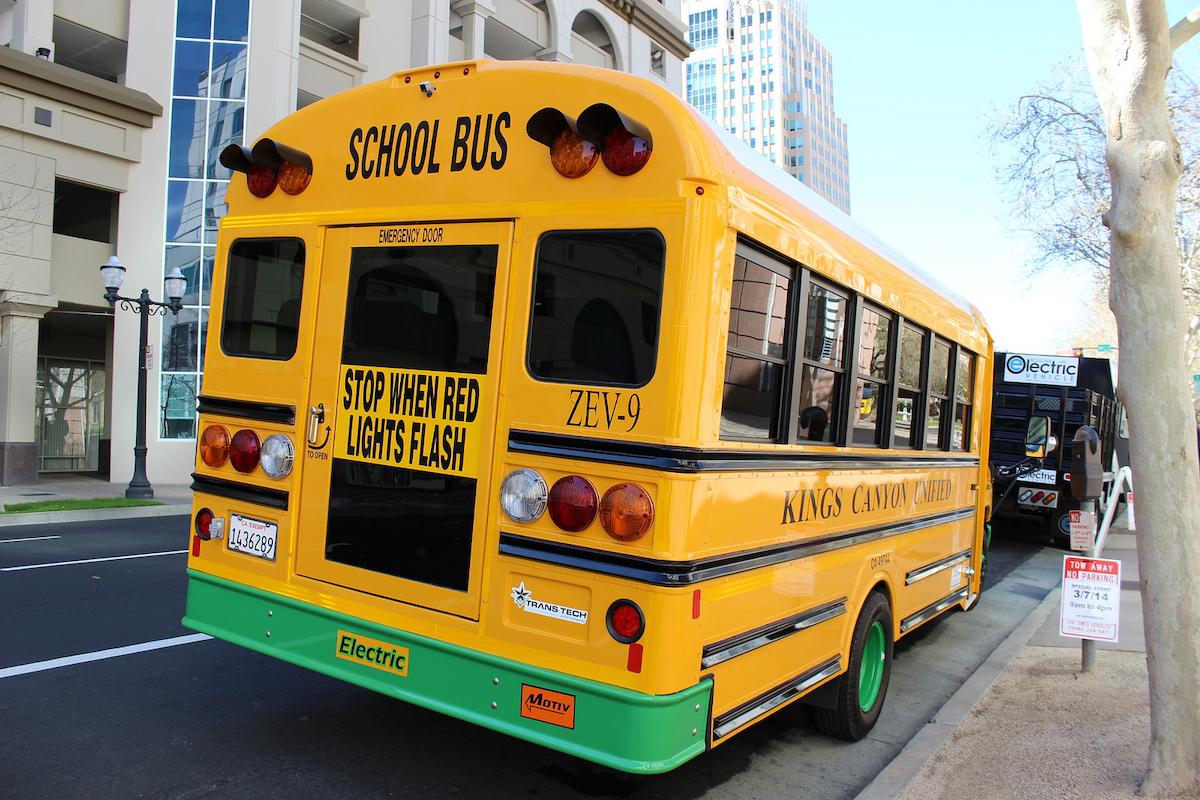

Nicholas Bianco and Tyler Clevenger co-authored this story
Climate change was on ballots across America last week. The results were mixed but leave room for increased climate action in the next two years and beyond.
States, cities and the private sector have carried the mantle of U.S. climate leadership since President Donald Trump’s 2017 announcement that he intends to withdraw from the Paris Agreement. Important wins by climate champions in the mid-term elections will expand the map of states committed to clean energy. Several ballot initiatives also asked voters to directly decide significant climate and clean-energy policy questions, with mixed results. And the change of leadership in the U.S. House of Representatives brings new opportunities to shape federal policy.
Ten newly-elected governors ran on platforms that included clean energy and climate action, and a total of 23 governors in states with 40 percent of the nation’s greenhouse gas emissions are poised to take steps to reduce their emissions.
Against this political backdrop, here are five major U.S. climate stories to watch in the coming year.
1. What's the role of a new Congress?
For the first time in a decade, the chair of the House Science Committee will accept mainstream climate science, and the chair of the House Committee on Oversight and Investigations is expected to be more interested in ensuring that government officials faithfully execute environmental laws than the current leadership.
Divided government, with a Democratic House and a Republican Senate, means bipartisan agreement will be needed to pass appropriations bills each year. This will give the new House leadership substantial leverage to fund climate measures, such as expanding research and development of carbon dioxide removal technologies and fulfilling the nation’s pledge to the Green Climate Fund. Climate champions may be able to block funding for administration efforts to roll back environmental protections, such as clean car standards established in 2012, while offering ambitious new climate proposals that could shape the terms of debate leading into the U.S. presidential race in 2020.
There may also be opportunities to enact targeted policies with broad bipartisan appeal, such as extending tax credits for electric vehicles, fostering carbon-free electricity generation sources and moving forward on energy storage. But this would require the House, Senate and the president to agree. Their willingness to do so depends on the pressure they feel from their constituents and remains to be seen.
2. Will new Republican congressional leaders fill the gap left by departing climate advocates?
The Climate Solutions Caucus will see its Republican membership cut roughly in half, down from 45 to 22 at this writing, with a couple races still too close to call. Twelve of the remaining members made their presence felt last year when they helped ensure that a Pentagon study on the national security implications of climate change went forward.
Florida Republican Carlos Curbelo, who co-chaired the caucus and promoted a carbon pricing bill, lost his re-election bid to the House, leaving Congress without one of its strongest and most visible GOP climate action advocates. However, Republican Representatives Brian Fitzpatrick of Pennsylvania and Francis Rooney of Florida both won re-election, showing that Republicans who support a carbon tax can win in moderate and bright red districts. Fitzpatrick has vowed to “push [the bill] as hard as ever.”
It remains to be seen whether more representatives will join the caucus, and whether interest in climate change will translate into more votes in support of climate action. As voters better understand the links between a warming climate and damaging weather events, climate inaction in impact-prone areas could become politically untenable. In Curbelo's district in the low-lying Florida Keys, both parties traded barbs about aligning with fossil fuel interests at the expense of the climate. Is this a sign of things to come?
3. Will support for carbon pricing grow?
For the second election cycle in a row, Washington state voters rejected a carbon tax. This year’s version would have levied a fee of $15 per ton of emitted carbon dioxide starting in 2020 and increasing by $2 per year until the state’s climate goals were met. It received support from a broad coalition of environmental and labor organizations, but was opposed by a $31 million campaign led by the oil industry.
This doesn’t mean carbon pricing is dead. The next two years could result in the biggest state-level expansion in carbon pricing we have seen in a decade.
In the next year, New Jersey and Virginia are expected to advance regulations to join the regional carbon pricing program RGGI in New England and the Mid-Atlantic states. Meanwhile, Oregon appears poised to adopt an economy-wide cap-and-trade program after efforts to pass a bill stalled in the 2018 legislative session. Voters re-elected Gov. Kate Brown and handed her supermajorities in both chambers of the state legislature. As a result, the overdue U.S. expansion of the Western Climate Initiative may finally be set in motion.
With new climate champions moving into governor's mansions across the country, how far and how fast will carbon pricing expand in the next two years, and will states be more inclined to join RGGI or the Western Climate Initiative?
4. What states will be next to adopt new ambitious renewable- or clean-energy standards?
Falling renewable energy prices have spurred a recent surge in the development of renewable power and a strengthening of numerous state renewable energy mandates. California and Hawaii set the most ambitious targets, requiring 100 percent of electricity to come from zero-carbon sources by 2045. New York and New Jersey aren’t far behind, requiring that 50 percent of electricity come from clean-energy sources by 2030. Nevada passed a ballot measure that also sets a target of 50 percent by 2030; to go into effect, the initiative must be reaffirmed in 2020 or passed by the legislature. A similar ballot initiative was defeated in Arizona, in the face of strong opposition from the state’s largest utility.
Newly-elected governors could further expand the adoption of renewable energy. Governors-elect in Michigan, Illinois, Wisconsin, Maine and Connecticut pledged to put their states on track to reach 100 percent clean energy by 2050, while Colorado’s Governor-elect Jared Polis is targeting 2040. And a trio of incoming governors in New Mexico, Minnesota and Nevada promised to support mandates for 50 percent renewable energy by 2030.
In a handful of these states, legislatures that previously saw renewable energy legislation stymied by gubernatorial vetoes could have a better chance of getting laws enacted. In her election-night speech, New Mexico Governor-elect Lujan Grisham declared that the third-highest oil-producing state will “be known as the clean-energy state of America.” She may face stiff competition from her class of fellow incoming governors.
With polling data showing that every state in the nation has a majority of residents who support setting clean-energy requirements, will these types of pledges become more popular across political parties?
5. Where does the transportation sector go from here?
Transportation accounts for about a third of the nation’s greenhouse gas emissions. The Barack Obama administration set standards to roughly double fuel economy and halve the GHG emissions rate of passenger vehicles. EPA analysis showed that these standards not only reduced GHG emissions, but also saved families money at the pump and drove down the full cost of vehicle ownership. The Donald Trump administration, however, has proposed severe rollbacks on the basis of what appears to be a shockingly error-ridden assessment.
The Clean Air Act allows states to opt out of the federal standards in favor of more protective standards set by the state of California. To date, 12 other states and Washington, D.C. have done so. However, the Trump administration is attempting to revoke California’s authority to set greenhouse gas standards for vehicles. The courts could ultimately decide whether the administration’s move is legal. In the meantime, more states could adopt the California emissions standards as well as their zero-emission vehicle (ZEV) program.
The ZEV program could be the key to unlocking much deeper emissions reductions from the sector. Electric vehicles appear poised to take off, with monthly sales doubling in the past year. States will have a lot to say about whether this trend continues through their decisions on the ZEV program, their investments in charging infrastructure and approach to tax credits for zero-emitting vehicles.
More states could adopt a carbon price for transportation fuels, including a cap-and-invest initiative being considered under the Transportation Climate Initiative and which was endorsed by reelected Governor Charlie Baker in Massachusetts. Or it could take the form of a low-carbon fuel standard such as is in place in California.
Will Congress extend the federal tax credits for electric vehicle purchasers and will states pick up the slack on vehicle standards?
Previously published on the WRI Blog.
Co-author Nicholas Bianco is the Acting Deputy Director for WRI United States. He previously served as the Director of Regulatory Analysis and Strategic Partnerships at the Environmental Defense Fund. In that role, he oversaw the analytical research conducted in support of the domestic climate and air regulatory team.
Co-author Tyler Clevenger is a Research Assistant for the U.S. Climate Initiative. He works with members of the U.S. Climate Initiative to design and implement our strategic outreach plan. He helps broaden our U.S. engagement by reaching out to policymakers, businesses, and other organizations. Tyler also works on strategic development for WRI U.S., researching external peer groups and scanning internal WRI work conducted on U.S. issues.
Image credits: 1) Louis Velazquez via Unsplash 2) Gov. Jay Inslee via Flickr 3) California Air Resources Board via Flickr
This NYU Incubator Wants to Help Veterans Become Entrepreneurs
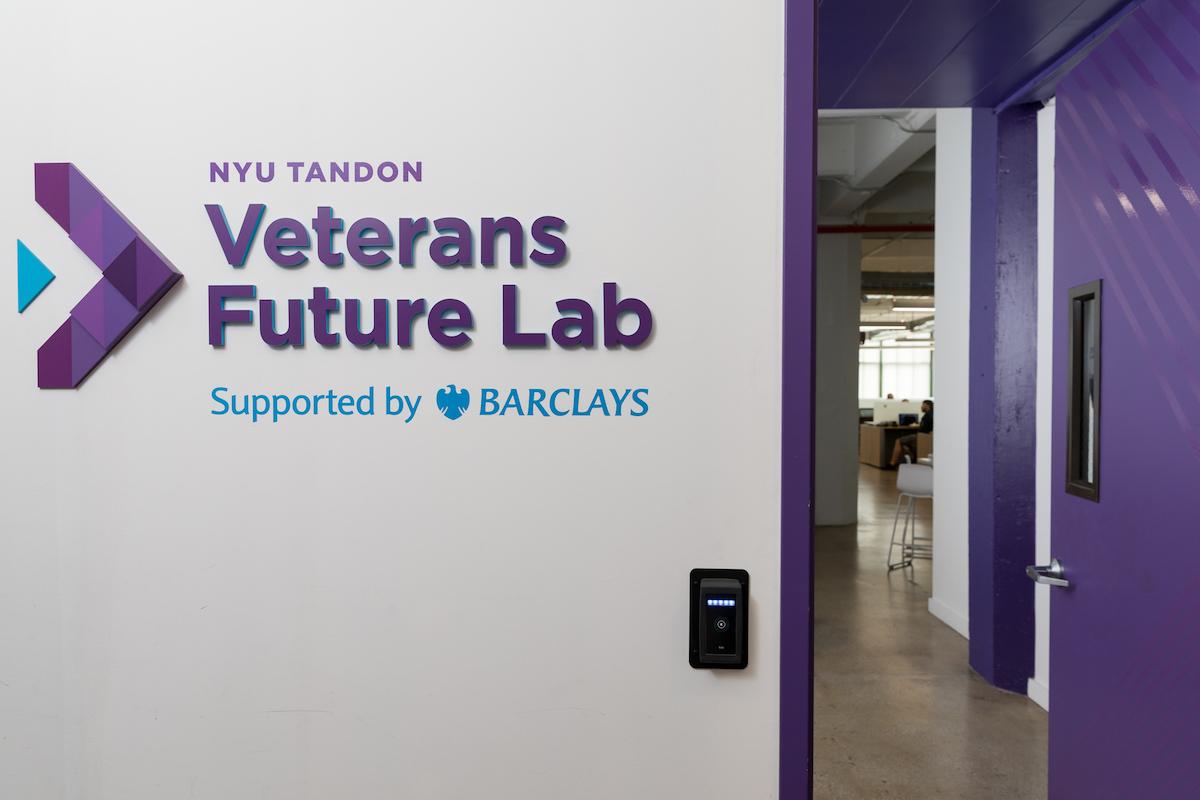

As the United States observes Veterans Day with parades, ceremonies and office closures, New York University's Tandon School of Engineering is looking to support veterans all year round.
Despite gaining a host of technical and leadership skills through military service, Iraq and Afghanistan veterans face consistently higher unemployment rates compared to civilians. Around half of former service members say they struggled to find work in their desired field after leaving the military, according to a 2018 survey from Edelman, which itself was founded by a World War II vet. And more than 40 percent of employed veterans feel their employers don't take full advantage of their skills and experience—a higher percentage than any other demographic by at least five points, the survey revealed.
Edelman's research, as well as others', indicates that American companies still have a hard time understanding veterans, the unique skills they bring to the table, and the unique challenges they face. As with other groups that find success elusive through traditional employment avenues, entrepreneurship provides a path for veterans to put their skills to work and take command of their futures upon re-entering civilian life.
After serving veterans through various programs over the years, NYU Tandon took its programming to the next level with the opening of the Veterans Future Lab, a startup incubator dedicated entirely to veterans and military spouses.
With funding from Barclays and the state of New York, the Lab's four-person team of mentors hope to address veterans' specific needs as they work to build their companies. "When you serve in the military, there are certain sacrifices you make and certain things you give up that you can’t get back," said James Hendon, director of the Veterans Future Lab.
"Think of a man or a woman in the service, and imagine an Earth Two where this person was not in the military. If I had to have these two people compete as entrepreneurs—the person who spent that time and emotional and mental capital dedicated to service, versus the person who did not—the person who did not would be further along as an entrepreneur," he continued. "We exist to help close that gap."
Inside the Veterans Future Lab
Located in Brooklyn’s Sunset Park neighborhood, the Veterans Future Lab houses early-stage businesses led by veterans and military spouses. It's part of the wider Future Labs program, a public-private partnership between the New York City government, NYU Tandon and corporate sponsors to incubate early-stage businesses and increase their success rates.
Opened last year, the Veterans Future Lab spans 3,800 square feet of office and prototyping space. Participants in the incubator's Apex program receive free space for a year and full access to NYU's resources—including faculty mentorships, networking connections and tailored support based on each startup's needs. The 3-D printers, laser cutters and other machinery in the Lab's prototyping space are free for Apex cohorts and also available to the public via membership.
Additionally, the incubator hosts the Veterans Entrepreneurship Training (VET) program, a free 12- to 14-week course for active-duty service members, veterans and military spouses, which Hendon himself participated in back in 2016.
"This is the only incubator of its kind in the country, as far as a high-touch incubator for U.S. military veterans and spouses," Hendon told 3p. "We're not asking for equity. We just ask you to be fully committed to your venture and that there be an actual market for it."
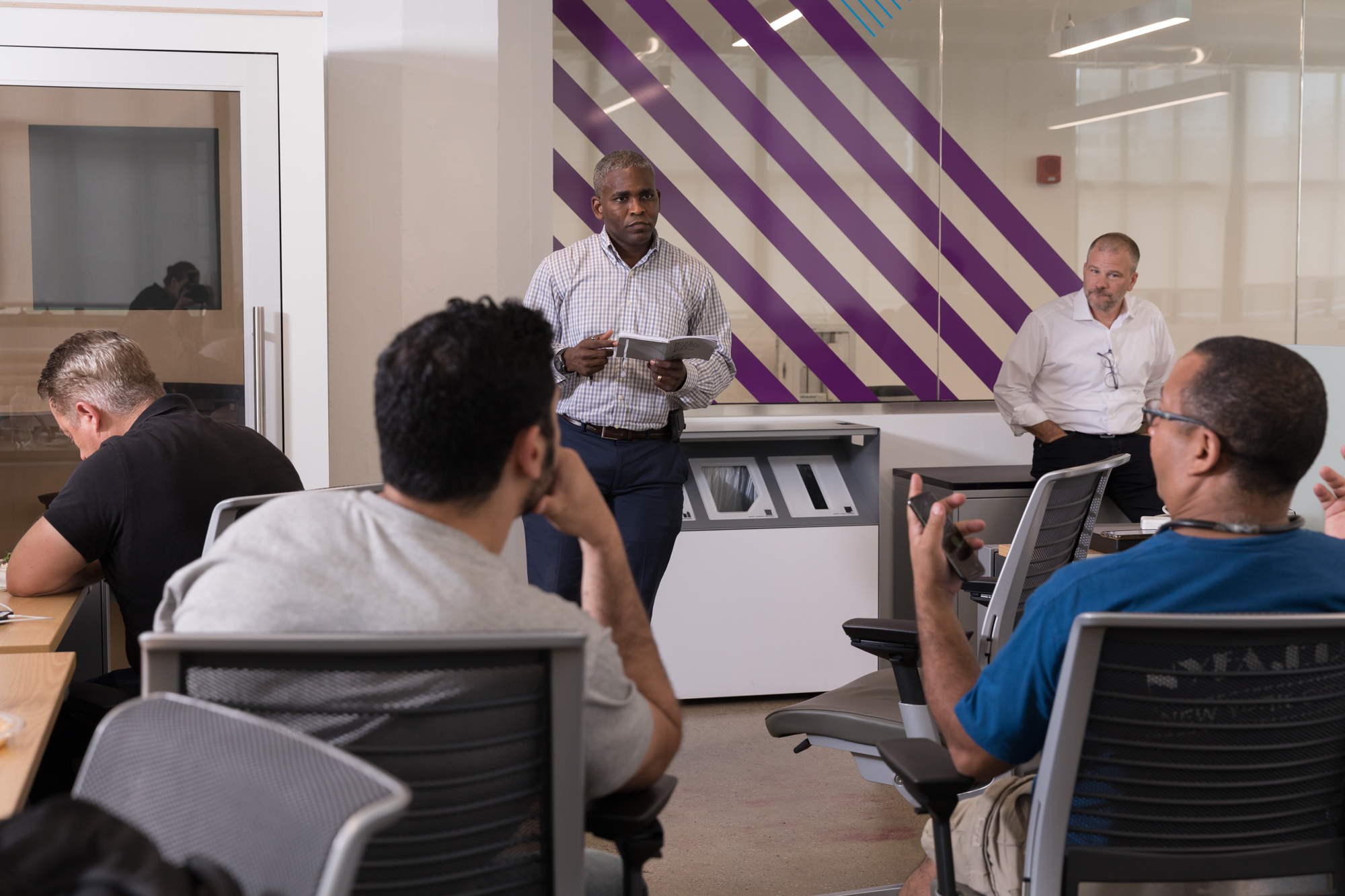
Image: James Hendon (center) in the NYU Veterans Future Lab.
From service to entrepreneurship: Diverse veteran founders require a tailored approach.
Hendon knows what it’s like to transition from military service to entrepreneurship, because he did it himself. Born and raised in Miami, Hendon entered West Point after high school and received a commission as an infantry officer upon graduation. "I'm always attracted to the harder thing," he told TriplePundit. "West Point and the idea of even being in the military terrified me, so I went toward it."
After seven years in active duty, serving in Iraq and Afghanistan and later as an admissions officer at West Point, Hendon felt it was time for a change. "I enjoyed the military," he said. "I still do, but I was looking for the next big challenge." He attended graduate school with funding from the Post-9/11 GI Bill, served as COO of the clean-energy startup Bloc Power, and ultimately went on to found his own clean-energy business.
Like Hendon, veteran entrepreneurs often extend their passion for service into their new ventures. "They trend toward things that are impact-driven and have a double or triple bottom line," Hendon told us. While other Future Lab incubators are sector-specific, the Veterans Future Lab is open to all veterans and spouses. Its first cohort of 20 companies span all industries—from tech platforms geared toward social investing, renewable energy and professional feedback, to a nonprofit serving veterans and a veteran-run business association.
The founders in the cohort are as diverse as their ventures, and indeed as the military itself—necessitating a tailored approach that meets founders where they are, Hendon said. "The companies are so different, and they have such different needs. That diversity is rooted in what the military is," he explained. "We call our program Apex, because it's all about the delta between who you were when you came in and how we're able to help you be further than you would have been once you leave."
The first cohort, who will graduate in April, range in age from 25 to 56. Four out of the 20 founders are women, a percentage Hendon hopes to grow in the next class. "It’s important for us to have gender parity," he said. "We want to gather different minds in the room."
When it comes to recognizing veterans as a founder population, "there's still more work to be done."
While many banks, investment groups and other financial companies have philanthropy programs geared toward veterans, these efforts don't necessarily translate into support for veteran-founded companies. "There's more work to be done in that area," Hendon said. "We are in an environment where people like to give lip service to being a value to veterans, but not as many folks will put their money where their mouths are as far as supporting veteran-related ventures."
Beyond access to seed capital, many veteran entrepreneurs also lack the connections they need to build their businesses, Hendon said. "We don't have as many veteran founders as I'd love for us to have because you've got folks who don't have the same Rolodex as someone who may come from a different type of background," he explained. "The investment community, whether they realize it or not, happens to support folks who come from certain pedigrees and already have certain advantages. This is a blind spot, and I hope we can cast a light on it where we are."
The bottom line
Nearly half of all World War II veterans went on to own or operate their own companies, according to Syracuse University’s Institute for Veterans and Military Families. Yet less than 5 percent of America's more than 3.6 million post-9/11 veterans are business owners. Dedicated support systems like the Veterans Future Lab can help bring those numbers back in balance—not only through mentorship, connections and access to capital, but also by providing a co-working space where veteran entrepreneurs can learn from one another.
"Everyone who we're targeting has made a sacrifice," Hendon told us. "There’s a gap between where they are and where they would be if they had not made the decision to serve—be it as a family member or as a service member. We want to try to address that."
The Veterans Future Lab is accepting applications for its 2019 cohort, which will go beyond the New York City metro and welcome veteran founders from across the country. You can apply here.
Images courtesy of Veterans Future Lab
What Albertsons Can Teach Top Companies About Community Outreach
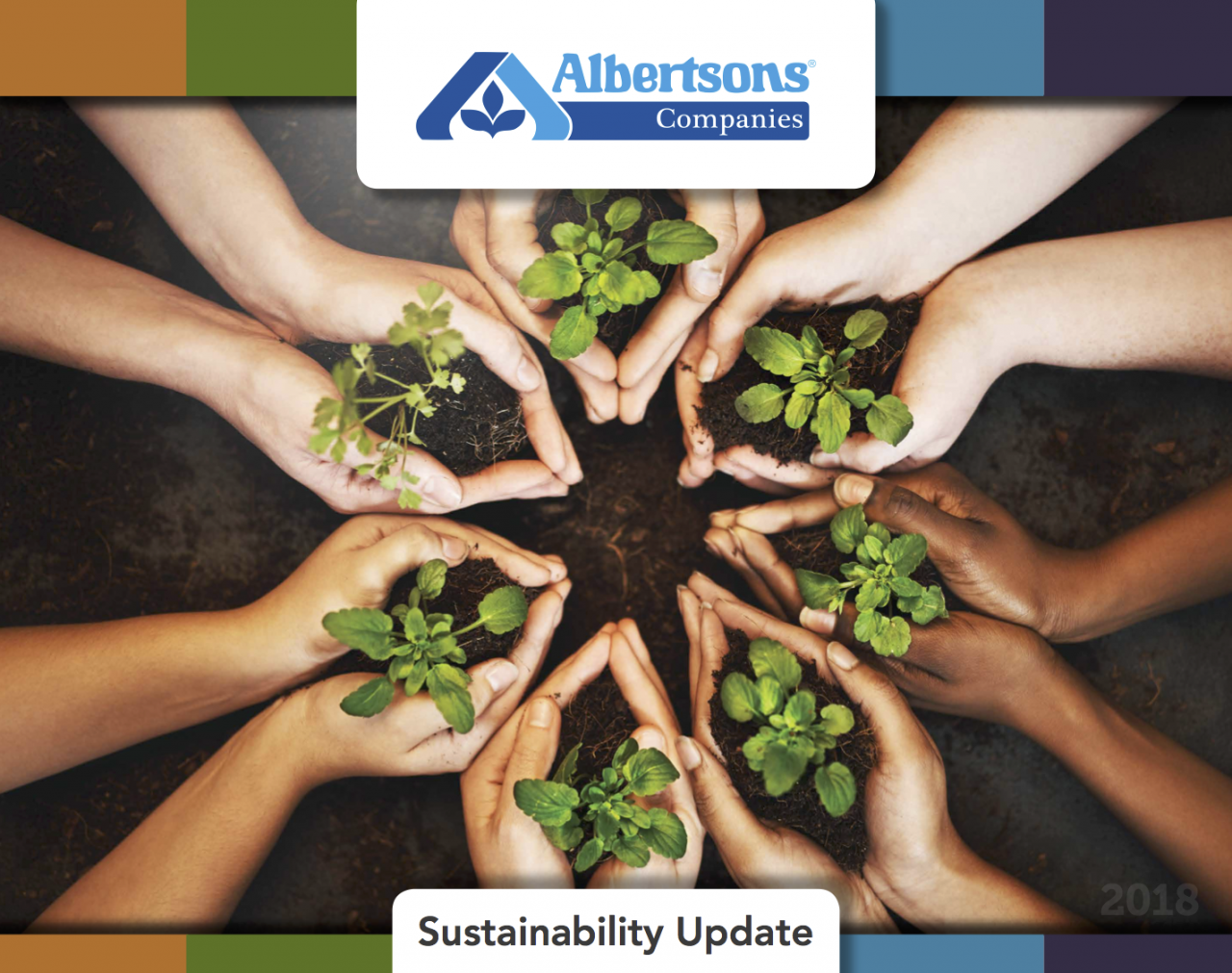

Companies can play a powerful role in the communities where they operate. By building relationships in the neighborhoods they serve and supporting local causes that are important to their customers, large companies can make a key difference in improving overall quality of life in the places they call home.
Albertsons Companies—which owns popular grocery and pharmacy chains like Safeway, Vons, Acme and, of course, Albertsons—is striving to embrace this type of role, as evidenced by its latest Sustainability Update published last week. We take a dive into some of its most exemplary community outreach programs to see what other big businesses can learn.
Investing $1 billion in neighborhoods nationwide
Albertsons says it has invested $1 billion in the neighborhoods where it does business since 2001. Its stores provide an opportunity to create awareness and mobilize funding to address key needs in these neighborhoods through customer contributions, passionate involvement of its employees, and valuable vendor partnerships, the company says.
Some of Albertsons' community outreach highlights in 2017 include:
- The company says it donated about $250 million in food to various local food banks, pantries and other food programs. It was recognized by Feeding America as a top-tier food donor.
- The company’s Jewel-Osco stores, which serve the Midwest, donated $1 million to the charity New Chance: Arts & Literature Fund to support enrichment programming in Chicago public schools.
- Albertsons held more than 3,700 community flu clinics and donated over 6,200 flu vaccines to communities in need.
Fighting childhood hunger
As many as 41 million Americans continue to struggle with hunger, according to Feeding America, and 1 in 6 American children does not have consistent access to sufficient food.Hunger Is, a joint project between Albertsons' Safeway Foundation, the Entertainment Industry Foundation and Feeding America, is looking to eliminate childhood hunger across America, starting with free breakfasts for children in need. The campaign launched the $30K in 30 Days project last year—which awarded $30,000 to organizations working to address childhood hunger and created a platform for these organizations to promote their work.
Over the past four years, Hunger Is has raised more than $21.3 million and disbursed grants to more than 270 programs addressing childhood hunger. More than 200,000 children across the nation have benefitted from this project.
Leveraging supply chain partners to fight trafficking
As a community partner, Albertsons works to protect its neighborhoods. The company has become a shipping partner of Truckers Against Trafficking (TAT), an organization that mobilizes the trucking industry to fight human trafficking.
As a shipping partner, Albertsons trains its private fleet of drivers with TAT materials, which helps them recognize potential signs of human trafficking and follow through with appropriate action. The company has trained 1,510 drivers to date, and it also encourages its 150 carrier partners to have their drivers receive TAT training.
Mobilizing employee volunteers
Albertsons' employees volunteer to make the communities and neighborhoods where they operate better places to live and work. The volunteer teams can be found engaging in activities such as sorting food at food banks in Los Angeles, celebrating Special Olympics participants in Seattle, and stuffing backpacks for school children in Chicago.
Albertsons employee teams are committed to improving lives and offering assistance where it is needed most, the company says. For instance, its teams in Portland participate in food drives and fundraising for their local food bank, while also donating their time for this cause.
“Our employee promise is to Make Every Day a Better Day,” Jim Donald, president and CEO, wrote in his letter to company stakeholders. “That means being a good community partner and a committed steward of the environment."
Image courtesy of Albertsons
Colorado Votes to Abolish Unpaid Prison Work, But Paltry Wages are Still the Norm Nationwide
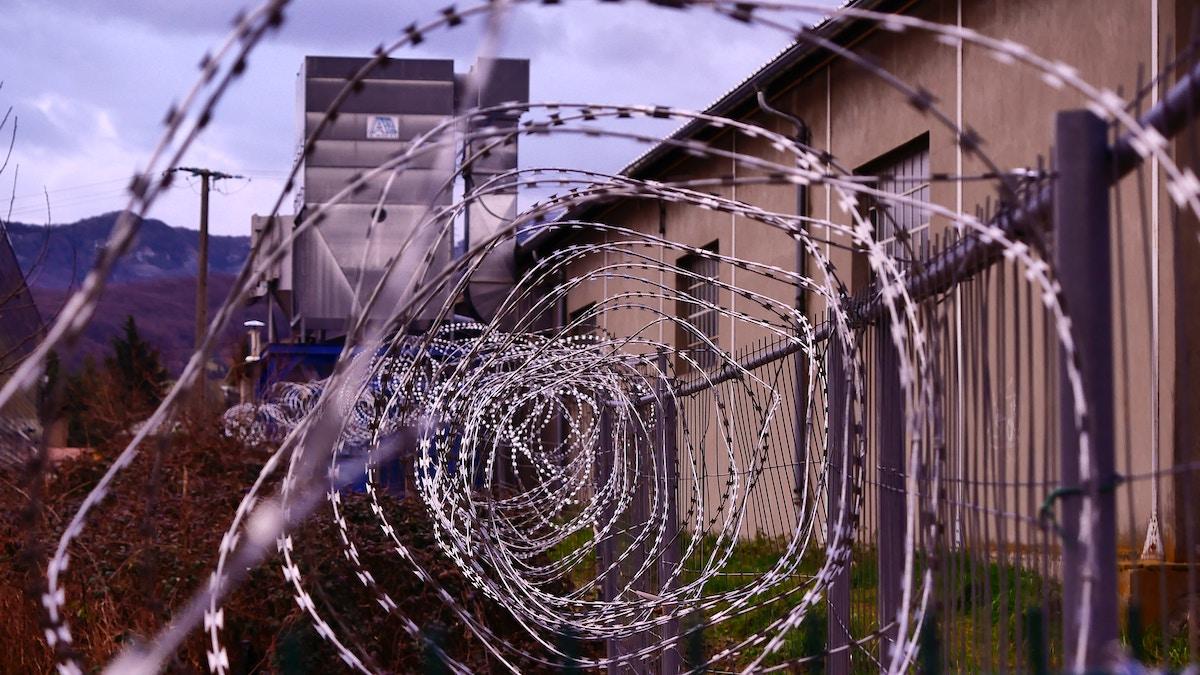

This week Colorado voters passed Amendment A, a ballot initiative to remove language in its state constitution that previously allowed prison labor without pay. In what many have dubbed “modern slavery,” unpaid (or extremely meagerly paid) labor in U.S. prisons made international headlines in recent months as incarcerated Americans staged widespread labor strikes to call for an end to the injustice.
Prisoners and activists moved a step in the right direction with Colorado’s Amendment A—just two years after the same initiative failed to pass in the progressive state. Proponents recognized that the measure might have failed on the ballot in 2016 because it overly complicated the phrasing of the amendment proposal. In fact, nearly 300,000 voters skipped the question altogether. Supporters made sure to simplify the language this go-around.
With the passage of Amendment A, Colorado's constitution will no longer hold the caveat that slavery is abolished “except as a punishment for a crime.” While this is undoubtedly a victory for prison reform activists, it’s more of a symbolic measure than one that will immediately reach the wallets of those incarcerated.
The state of prison labor in the U.S.
Incarcerated people in Colorado, and the United States at large, earn an average maximum daily wage of $3.45. And that’s before the prison deducts money from each paycheck, sometimes, as is the case in Massachusetts, as high as 50 percent. While these state-by-state deductions serve legitimate purposes—they may go toward discharge charges, savings accounts or court fees, for example—they continue to limit incarcerated people's ability to purchase basic items like tampons or cell phone cards, each of which go for around $10, or two weeks' pay.
Prison jobs are still entirely unpaid in five states, except for in rare exceptions—Alabama, Arkansas, Florida, Georgia and Texas—all of which dubiously rank in the top 10 in state imprisonment rates per 100,000 residents.
Paying prisoners nickels to the dollar (and that’s being generous) cannot positively contribute to attempted efforts to curb America's alarming recidivism rates—an estimated 76.6 percent of people return to prison within five years of release. People with criminal justice histories are often cash-strapped upon re-entering society, because the months and years spent working in prison amounted to very little.
This low pay—combined with lack of access to rehabilitation, a desire for sentencing reform and what are often inhumane living conditions—recently created a tinderbox in prisons nationwide. The fuse was lit when seven prisoners were killed during a prison riot in April at the Lee Correctional Institution, a maximum-security prison in South Carolina. The event inspired a 19-day, nationwide prison strike. Prisoners from 24 facilities stopped working, and in some cases stopped eating, to promote 10 national demands of men and women in prisons.
Where do incarcerated Americans work, and why?
This is not to say that many of the 900,000 working prisoners don’t value the opportunity to work while incarcerated. Some see it as an opportunity to keep busy in an otherwise bleak place, pick up a skill and, yes, make a buck or two along the way.
“My prison job made me feel like I was fulfilling my existential duty to society,” Chandra Bozelko, who served six years in a maximum-security women's prison in Connecticut, wrote in the LA Times. “Work is more than a wage; it’s an expression of humanity, and that is especially true in prison.”
Prison jobs come in many forms; the majority of jobs are known as “facility” or plainly “prison” jobs. These include custodial, maintenance, food service or groundskeeping positions. A smaller percentage of prisoners are part of work release programs, work camps and community work centers—these jobs are typically set aside for people who are deemed "low risk."
An even smaller number of people (5,300 of the 2.3 million incarcerated nationwide) work in the Prison Industry Enhancement Certification Program (PIE Program). PIE is a Congress-created program that allows private-sector companies to employ prisoners in exchange for free or reduced rent and utilities. Well-known companies like Victoria’s Secret, Whole Foods, Nintendo and Eddie Bauer have famously (or infamously) been mainstays in the PIE Program.
The program has been somewhat of a mixed bag, drawing a fair share of both criticism and praise. Supporters argue that the program supports inmates and teaches them transferable job skills, while critics say companies are exploiting prisoners for low wages at their own financial gain. In 2015, Whole Foods was exposed for paying 85 cents a pound for tilapia farmed by prisoners and then turning around to sell it for $11.99 a pound.
Not all prison jobs, however, operate from behind the scenes. In California, half of all wildfire firefighters are incarcerated, yet they make $2 daily compared to the non-incarcerated firefighters’ $22 to $34 an hour. Likewise, in Boston, prisoners make less than $1 an hour to shovel snow alongside union workers making $30 an hour.
The bottom line
States spend an average of $33,274 per inmate, per year. Perhaps with a modest increase in pay rates, prisoners could contribute to the high operation costs that come with providing substantial meals, clean quarters and a safe environment.
But for now, Colorado activists are taking this victory in stride and celebrating the importance of passing Amendment A.
“This won’t have a direct impact on prison reform or how inmates are treated,” activist Kamau Allen told Fox News. “But it is definitely more impactful than removing something like a Confederate monument, because this will actually change the text of a living document.”
Image credit: Hédi Benyounes via Unsplash
It's Time to Think Seriously About Behind-the-Meter Energy Storage, Says BNEF
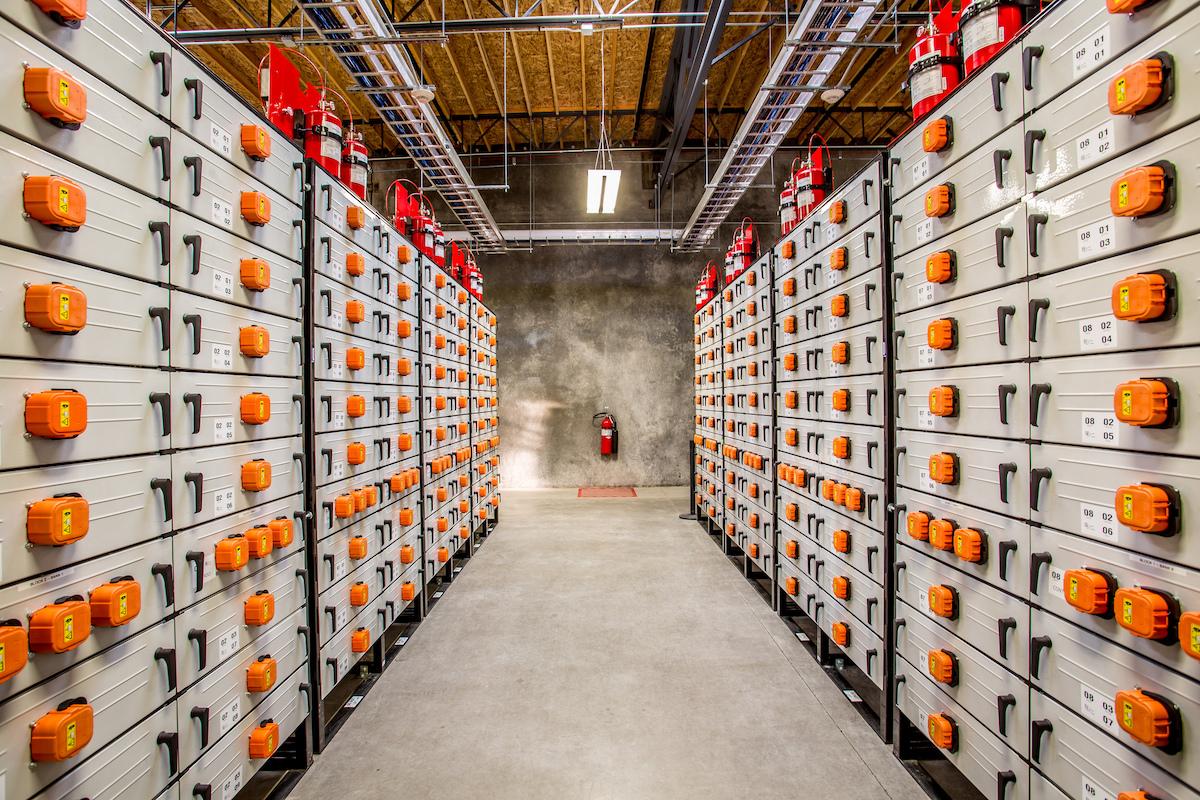

As the cost of lithium-ion batteries continues to fall, businesses gain a competitive edge with behind-the-meter energy storage. They can deploy energy storage to avoid peak electricity rates and high demand charges. Storage technologies can also maximize companies' use of renewable energy and help to improve the quality and responsiveness of their electrical systems. That's all in addition to gaining a buffer against power outages.
The battery market has been accelerating rapidly, and the latest Long-Term Energy Storage Outlook report from Bloomberg New Energy Finance (BNEF) suggests that companies without their own batteries will be at a disadvantage as the trend takes hold.
Behind-the-meter energy storage
Behind-the-meter energy storage refers to small-scale battery arrays that are installed on the ratepayer's premises.
According to BNEF, the behind-the-meter market will grow at a relatively slow pace through the 2020s, compared to utility-scale storage, but companies should be prepared to climb on board by the mid-2030s. BNEF emphasized the advantage for both business and residential customers:
Behind-the-meter, or BTM, installations will be sited at business and industrial premises, and at millions of residential properties. For their owners, they will perform a variety of tasks, including shifting grid demand in order to reduce electricity costs, storing excess rooftop solar output, improving power quality and reliability, and earning fees for helping to smooth voltage on the grid.
If you caught that thing about earning fees, that's a particularly interesting development for businesses.
Smart-grid technology is already enabling grid operators to aggregate small-scale renewable energy resources into a "virtual power plant," helping to avoid the cost of building new utility-scale facilities. BNEF foresees that behind-the-meter batteries can provide a similar service.
Ideally, the aggregation of behind-the-meter batteries would help participating businesses offset their costs and help improve grid services throughout their host community:
There is significant opportunity for energy storage to provide flexibility—to help balance variable supply and demand—and systems will undoubtedly be used in complex ways. Energy storage will become a practical alternative to new-build generation or network reinforcement. Behind-the-meter storage will also increasingly be used to provide system services on top of customer applications.
The rise of the electric vehicle
The report also provides new motivation for companies to transition their fleets from fossil fuels to electricity. BNEF points out that if you combine the expected growth in behind-the-meter and utility-scale storage, you still get to only 7 percent of the total expected battery demand by 2040.
The vast bulk of the energy storage growth BNEF predicts will be in the mobile energy storage sector, aka electric vehicles.
Companies that are not in a position to take advantage of behind-the-meter batteries could still reap some of the benefits—including vehicle-to-grid aggregation—by deploying their EV fleets as a form of behind-the-meter energy storage with wheels.
Utility-scale energy storage
Even without a behind-the-meter advantage, in general businesses stand to benefit from the explosion of interest in batteries. Energy storage leverages more wind and solar into the electricity grid, helping to stabilize rates and improve resilience throughout the system.
In this context, it's worth noting that the BNEF report focuses on battery technologies that are available globally. It excludes pumped hydro, which is constrained by geographical and regional factors.
For those of you new to the topic, pumped hydro refers to systems in which water is pumped to an upper reservoir during periods of surplus or low electricity demand, and released downhill to a generating station as needed.
Here in the U.S., pumped hydro already accounts for the vast majority of energy storage capacity, and improvements in the pumped hydro sector are helping to drive the new wave of energy storage in this country. Technological improvements can expand the efficiency and capacity of the existing fleet without the need to find new sites.
Earlier this year the U.S. Energy Information Agency ran the numbers and confirmed that lithium-ion technology still dominates the large-scale battery storage market in the U.S., with an 80 percent share.
However, companies that are looking to the future may have a wider array of energy storage options at their disposal, including flow batteries and, of course, hydrogen.
Image credits: 1) Portland General Electric via Flickr 2) BNEF